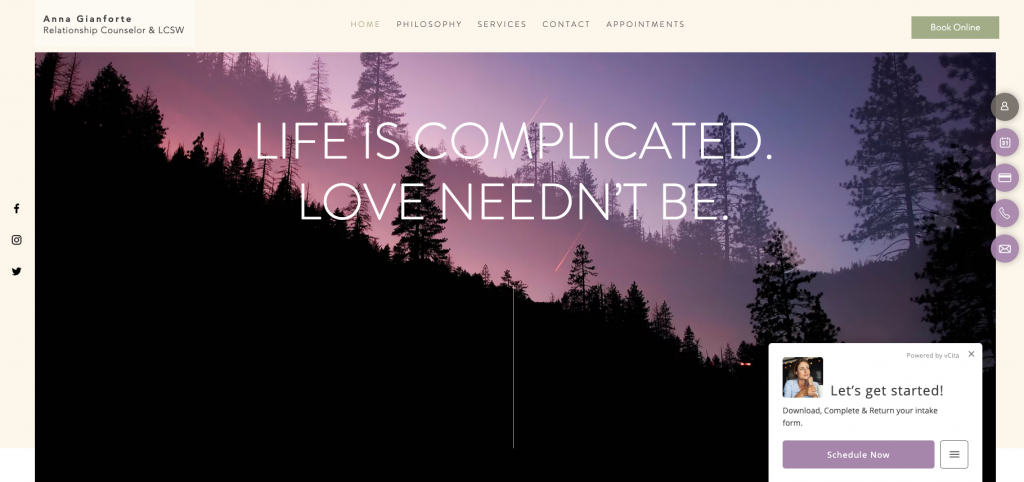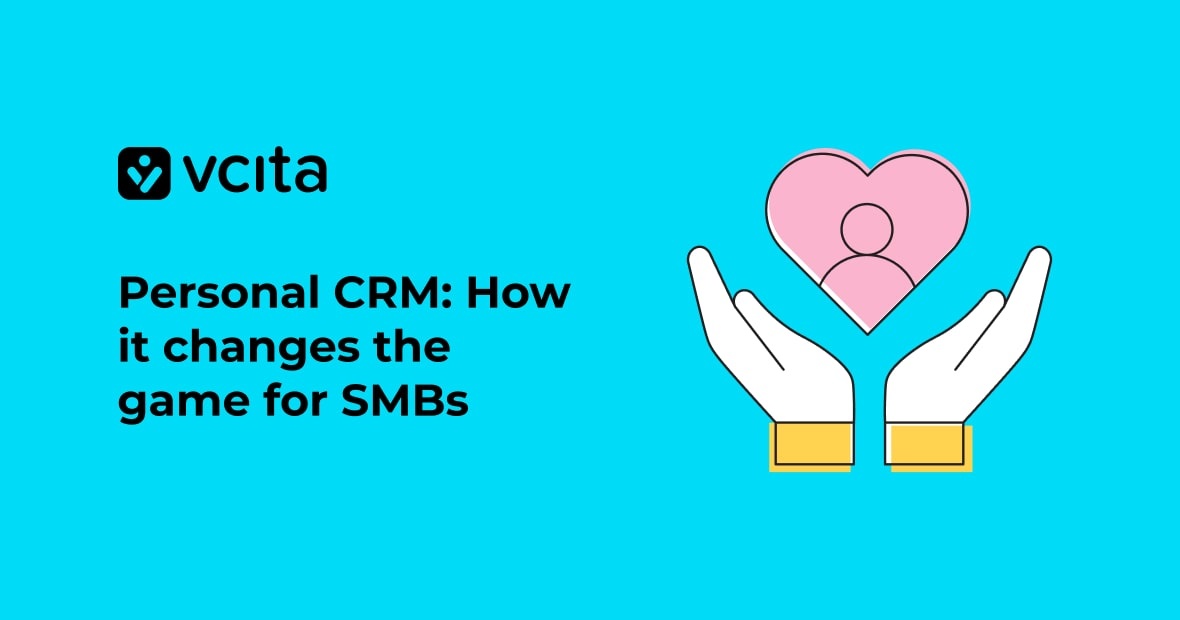When you’re a professional coach, talk isn’t cheap—but you need the right marketing strategy to prove it.
With the current multitude of business coaches, life coaches, personal trainers, fitness coaches, and others on the market, you’ll get the most mileage with a strategy tailored to your niche. In-person services like life coaching or personal training need a solid local marketing strategy, while B2B coaching services performed over Zoom need a solid digital marketing game. Life coaches will need a more organic marketing strategy than other coaches in order to build trust, while business and fitness coaches may fare better with direct, paid advertising strategies.
If you’re new to the market and want to get noticed, below are 10 offline and 10 online ways to get some traction:
Efficient Offline Marketing Strategies for Targeting Local Clients
Offline marketing strategies are all about letting your local community know that you exist, which are especially important If your business model depends on clients showing up in-person. Below are 10 offline strategies to target local clients:
1. Word of Mouth Marketing
If you’re a life coach or fitness coach, then part of your success will depend on your personal rapport with others. When someone hears from a friend or family member that you’ve done a great job, they’ll be much more likely to come to you for a coaching session. Although giving paying clients is a great experience is one way to help spread the word, you can speed up the process by offering your services as a volunteer. For example, a personal trainer or life coach could offer a free group class every month at a community center to help showcase their skills and get the class talking.
2. Networking:
Attending conferences or trade shows in your area of expertise will not only help you learn and evolve, but they’ll help you come into contact with people who can use your services or help you develop professionally. If you’re a personal trainer, career or life coach who depends on local clients, then focus especially on local networking events when you can—but if you drum up most of your business online, a conference or trade show can be a great excuse to travel! Networking can also be as simple as having business cards on hand at all times, or attending professional development workshops in your field, and it’s a great idea for all types of coaches.
3. Direct Marketing:
Flyers, posters, and print material grab attention—but they have to grab the attention of the right people. Personal training coaches, for example, might want to see if they can leave some flyers in a local health food store. Business coaches might opt to mail flyers to local businesses or leave a few in the lobby of a corporate office building. Bulletin boards of coffee shops will give you a lot of bang for your buck, since a lot of people will view the same flyer—but if that’s the case, make sure yours stands out. If you’re going this route, think about hiring a graphic designer and making the flyer with an unconventional size or folding style to help it grab attention. Another form of direct marketing—business cards—is absolutely essential for all forms of coaches. Not only does it communicate your contact information, it also communicates professionalism, and gives prospective clients an easy way to keep your information on hand.
4. Speak at an Event:
If you’re a gifted speaker and there’s a niche coaching topic that you love talking about, why not look into speaking at an event? Chances are, the same conferences and trade shows you go to network at also need speakers with expertise. This is a classic marketing method for life coaching, but you can also use it for other types of coaching, as long as your topic is fun and engaging. Speaking engagements help boost your reputation in person, but you can also showcase them on your website as a way to increase your credibility. Make sure to welcome questions from people afterward, and make sure you have business cards to hand out!
5. Offer Free Consultations:
Prospective clients poking around your website may hesitate to sign up for an expensive session—so make it easier for them by offering free consultation calls! If you build trust in person, it will be easier for them to make that first paid appointment. While this strategy can work with all coaching niches, it may need to be modified a little depending on what industry you’re in. For example, a free consultation for life coaching might be more freeform, getting a feel for how you might work together. A consultation for business coaching might be more structured, deciding on a general strategy for moving forward. Fitness coaching consultations might involve a light workout or just a short conversation with the trainer. Whatever you offer, make sure it has just enough value to leave your client wanting more.
6. Prioritize Your Client’s Comfort:
With in-person coaching, your client’s comfort is key. What your client’s comfort means, however, will vary between coaching niches: for example, if you’re a personal trainer, making sure your workout environment is safe and that a client has access to extra water or energy drinks is a great way to help make your client feel supported. For a life coach, comfort might look more like confidentiality – so having a soundproof or private office designed for comfort is a must. For business coaches, professionalism is key; making sure your business casual errs more on the side of business and less on the side of casual will help your client feel more at ease with your ability to lead in business.
7. Find your Niche:
In any coaching business, branding is twofold: you’re selling both your personal brand and the coaching expertise you offer. Making sure the latter is as specific as possible will help you seamlessly combine them. Think about what you have specific expertise in and take a look at some of the niche areas in your coaching specialty. For example, if you’re a personal trainer, you could look at bridal training, running coaching, or coaching geared towards specific sports. If you’re a life coach, some examples might be divorce, gender transitions, or any other major life change you have expertise on. Finding a specific niche will help you build trust, since it sends the message that you’re spending your time gaining expertise in the area they need help with.
8. Create Specialized Print Materials for Paying Clients:
Since coaching is a primarily intangible service, it’s a good idea to offer your clients something tangible that shows them what they’re paying for. Offering special, branded print materials for paying clients is one way to give your clients something they can take with them. This works best for coaches that have set strategies they use with a lot of people, like fitness, nutrition, or business coaches. Fitness forms to fill out, for example, usually include a waiver and assessment; but you could also include home workout instructions, a meal plan, or a workout log that tracks progress. Business coaching forms might include brainstorming, decision-making, or team management Packing them up in a bright folder with your logo also helps you re-assert your brand identity and professionalism, particularly in career and business coaching where managing paperwork is an integral part of the process.
9. Don’t Make Your Clients Wait:
In all types of coaching, it’s important to show up on time, so make sure you leave some buffer time between sessions. This is particularly important in fields like business coaching, where meeting clients at their offices means extra travel time to consider. For life coaches and fitness coaches that have clients come to them, using a scheduling tool like vcita eliminates the hassle of manual booking and scheduling errors. Clients who are left waiting for every session will begin to lose trust in your professionalism, which is critical if your product is professional advice. The software will also send reminders to your clients to show up for appointments—minimizing the risk that you’ll be left waiting too!
10. Put All Your Expertise Into One Place:
Once you’ve accumulated enough knowledge of your field and have developed your approach, why not put the results into a book? It may sound daunting, but remember, it doesn’t have to be a textbook: even 50 pages of content can make for a nice self-published book, especially in fields like nutrition and fitness, where graphics of recipes and workout techniques will tend to take up a lot of space. Whether you offer it in tandem with your services or as an additional sale is up to you, but being a published author in your field will help you win the trust of your clients, even if you have to publish the book yourself.
Efficient Online Coaching Marketing Strategies
Your online presence is a powerful marketing tool, and as such, it’s one that should be used wisely. Make sure you’re on top of your online marketing game, especially if you offer virtual services instead of in-person services. Below are 10 ways to get the most mileage out of your digital presence:
11. Participate in Facebook Groups:
Making yourself a regular participant in Facebook groups will give you instant contact with a huge number of prospective clients. There are several coaching-themed groups to join, but also try expanding into your niche—for example, if you’re a nutrition expert, try joining a few cooking groups and fitness groups as well. Offer tips in your area of expertise, answer questions, and join threads that are engaging to you. People who notice your advice will click on your Facebook page, with all your contact information and a link to your website. It’s also possible to create your own Facebook group once you have a following: take some time to research the Facebook groups you’d like to emulate, then try it for yourself!
12. Optimize Your Call to Action on Facebook:
Once you’ve created a Facebook page for your business and chosen groups to join, make sure you optimize your call to action on your Facebook page. vcita’s software makes it easy to add a “Book Now” button to your business page, so clients will be able to see your available appointment times and choose a specific service right from Facebook. Include reviews on your Facebook page close to the call to action button to help unsure clients make that click. The fewer links clients have to click in order to book with you, the more likely they will—so if a client from a Facebook group discovers your profile, make it easy for them to take the next step.
13. Start Blogging:
A blog will help your website’s SEO ranking, and will double as a great source of information for clients. If you need help getting started, do your research to find some great examples of blogs you’d like to emulate. If you meet with clients in person, try choosing a topic that’s locally focused—this helps boost your SEO ranking in local searches. For example if you’re a personal trainer, you could try writing a blog about great running routes in your area. You can then share your blog posts on social media, particularly on the Facebook groups that it might apply to. Blogging is especially useful for life coaches, because it gives people an idea of who you are before they book with you, building trust and increasing the likelihood that they’ll become regular clients.
14. Use Clear Call-to-Action’s on Your Landing Page:
Sometimes your website visitors will want to explore your website before they book with you—but it’s in your best interest that it’s easy to find your contact information when they do decide to book. vcita’s Online Scheduler will create a widget on your website that stays in place as the user scrolls, meaning they’ll have your call to action visible at all times. This is especially great if you offer short free consultations, since it’s a low-commitment way for clients to test your services, combined with the easiest possible way for them to do it.
See an example below of an efficient ‘schedule now’ button, created with vcita.

Anna Gianforte, Relationship Counselor
15. Maintain Rapport With your Current Clients:
Just because someone has made their first appointment doesn’t mean they’ll become a regular client. More than many other businesses, coaches have to continually work to maintain a positive rapport with current clients, which means remembering the small details from session to session. Having customer relationship management (CRM) tool like vcita’s CRM software is a great way to keep all of your information organized, particularly for life coaching and career coaching professionals working with a lot of new information. Health and fitness coaching professionals can also use this as a crucial way to track customers’ allergies, injuries that prevent them from doing certain sports, and other vital health information that may affect the advice you give them. You can also track your customers’ data and use it to send them personalized messages, adding to the impression that you’re keeping on top of the conversation. If you have a client who did a consultation with you once and you enter their information, CRM software makes it easy to bring up their notes again if they decide to book with you six months later.
16. Set up a Mailing List:
An email marketing campaign you put together can add value to people’s lives, and add value to your business at the same time! If you have a blog, you can use your email marketing campaign to let your subscribers know about post updates; or if you’re offering a special product or service, it’s a great way to let the people that already like what you’re offering know that you’re expanding your repertoire. This is an especially useful solution for health and fitness coaches, since clients will be making a daily effort to follow your advice and a daily or weekly email is a great reminder to keep them on track. vcita’s email marketing tool lets you create easy email marketing campaigns to reach all your clients, or a certain subset of them.
17. Track your Marketing Efforts:
If you’re starting to spend money on marketing in any capacity, make sure you keep track of how much you’ve spent and how much your business has grown by comparison. This practice will help coaching businesses that rely more heavily on paid advertising—often in the health and fitness sector—since organic efforts are far more difficult to track. Even if you use primarily organic marketing, you can still compare your efforts with the dollars-and-cents results over time, and adjust them as necessary. If you have a Google My Business page, take a look at your analytics to see what demographics you should be targeting if you need to adjust your strategy.
18. Make a YouTube Channel:
It’s all over the web, for good reason: video content is engaging. This is doubly true if you’re in a coaching profession, since your prospective clients aren’t just interested in what you say, but how you say it. Life coaches in particular stand to benefit from videos, since clients are often preparing to share vulnerable sides of themselves and want to get a sense of what you’re like to talk with. Personal trainers can also use video to help create a home workout plan for clients who might otherwise forget how to do certain exercises. The right personal coaching video channels help make prospective clients more comfortable with their authors’ coaching strategies, and more likely to pay extra for the full experience.
19. Accept As Many Payment Types As Possible:
Once a client is willing to pay you, make sure it’s as easy as possible for them to do it! If you’re familiar with Square Reader, PayPal, or Stripe, you’ll know that Square Reader now accepts debit cards, PayPal can link to your customers’ bank account, and you can set up ACH payments with Stripe for automated billing. If you choose one of these platforms, you can link them to your vcita account for streamlined invoicing and payments, allowing you to accept more ways to pay. Coaching professionals like business coaches might be used to having cheques cut for them, but life coaches and other professionals that work with individuals usually find that their clients appreciate the extra options. People who have just revealed something deeply personal often aren’t in the mood to haggle about payment options, so make sure yours are as seamless as possible.
20. Know Yourself and Your Audience:
In the coaching business, your brand extends beyond the design of your website—in some ways, your personality is also in the spotlight. Although you may be tempted to create a “persona” in your digital marketing efforts, it’s a much better approach to let your real personality shine through. You’ll also want to know what questions your audience may have, so you can answer them right on the landing page of your website. Take a look at the websites of some coaches you admire, and identify the more subtle things they’ve done to let clients know who they are. Whatever your niche is, your website should be about both you and your clients, emulating the feel of what it might be like for you to work together. To get inspired, read also the article ‘5 examples of life coaching branding’.
One Step At a Time
The words of Lao Tzu have been quoted by many coaches: “The journey of a thousand miles begins with one step.” If you’re feeling overwhelmed by the options, make the easiest step first to get started in the right direction. Whether that is designing your new business card, signing up for a networking event or adding a ‘schedule now’ button to your website. These are all small steps in the right direction of getting more coaching clients in the upcoming year. Good luck!





